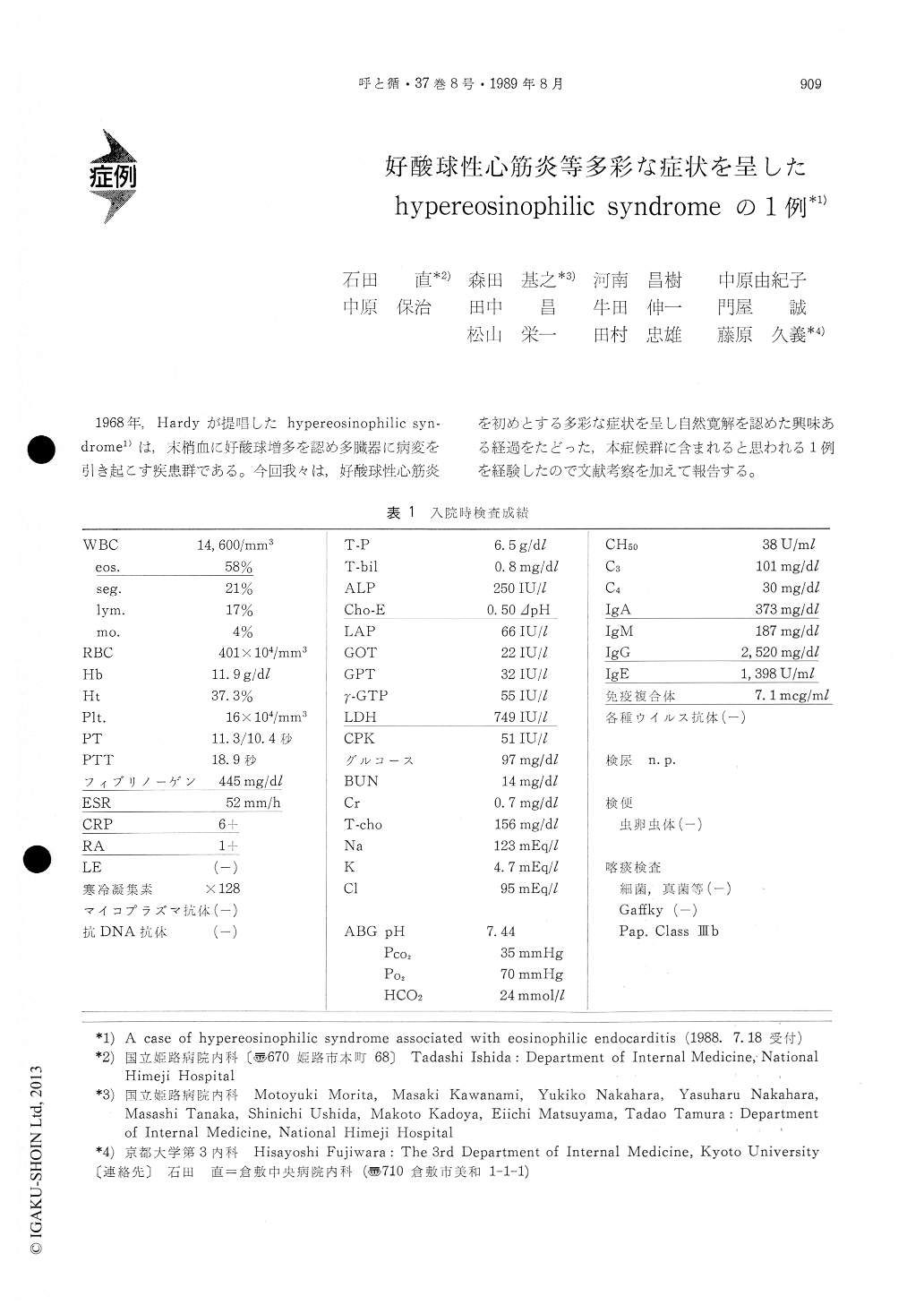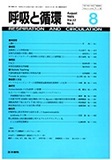Japanese
English
- 有料閲覧
- Abstract 文献概要
- 1ページ目 Look Inside
1968年,Hardyが提唱したhypereosinophilic syn-drome1)は,末梢血に好酸球増多を認め多臓器に病変を引き起こす疾患群である。今回我々は,好酸球性心筋炎を初めとする多彩な症状を呈し自然寛解を認めた興味ある経過をたどった,本症候群に含まれると思われる1例を経験したので文献考察を加えて報告する。
A 66-year-old woman, who had had bronchial asthma, was admitted to our hospital because she suffered from fever, productive cough, wheezing, dyspnea, and chest pressure sensation.
Her chest X-ray showed migrating infiltration and marked cardiomegaly. Her ECG at the admission revealed abnormal Q wave and T wave inversion, though that of 3 years before had been almost nor-mal. Hematology showed leukocytosis and eosino-philia of 8,000/mm3 without abnormal cells. All immunological tests were negative and the specific cause of the eosinophilia was unknown.
2 weeks after admission, she complained of severe chest pain suddenly and her ECG showed ST eleva-tion on V1-4 and serum CPK level was elevated to 290 IU/l.
By the thrombolytic agent and anticoagurant therapy, her symptom was lightened immediately.
2 months later, we made her cardiac catheteriza-tion and myocardial biopsy. Her LVG showed a small aneurysm of the apex, though her CAG was normal finding. The biopsy revealed moderate fib-rosis and cellular infiltration including a few eo-sinophils. We thought that eosinophilic endocarditis had existed first, and secondary embolism continued led to the small infarction.
The hypereosinophilia was spontaneously norma-lized 2 months after admission, but the patient complained of myalgia and sensory disturbance of extremities. The biopsy of quadriceps muscle could prove neither infiltration of eosinophils nor vasculi-tis. But we diagnosed mononeuritis multiplex due to hypereosinophilia.
Judging from various symptoms and laboratory findings, this case was included to the hypereosino-philic syndrome. We also thought allergic granulo-matosis and angitis as one of the differential diagno-ses, but histologically vasculitis was not proved.
In this case, eosinophilia was disappeared without using corticosteroids. This progress is rare and very interesting and careful following is thought to be necessary.

Copyright © 1989, Igaku-Shoin Ltd. All rights reserved.


